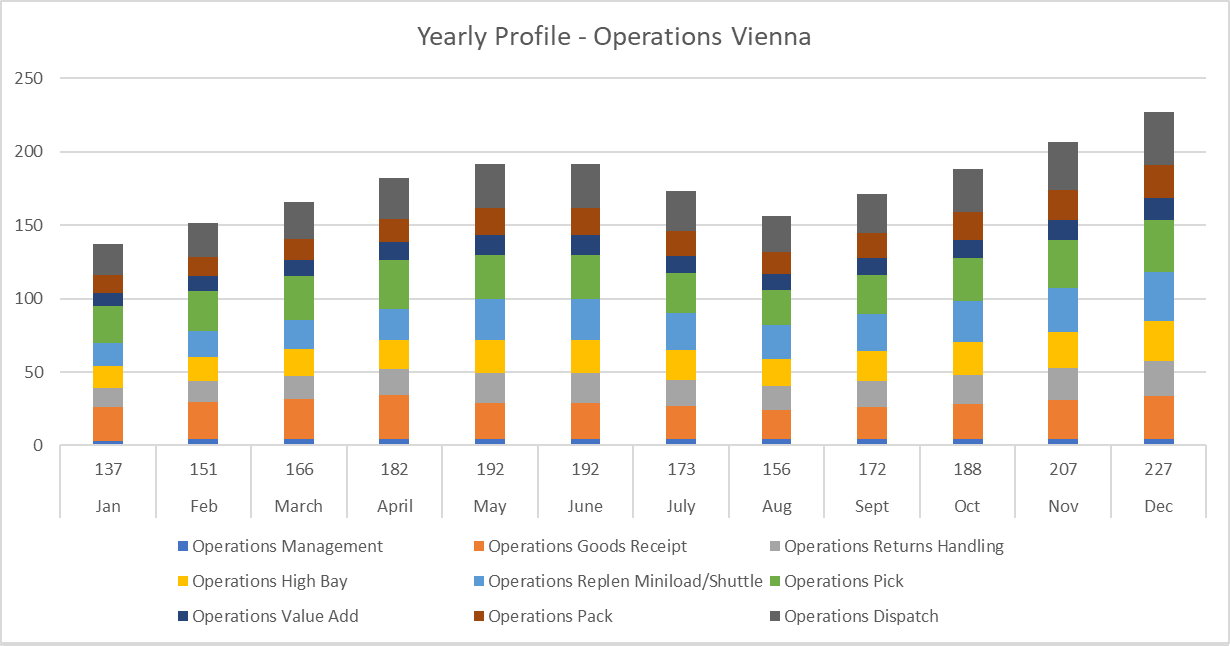
Strategic Planning starts top-down from the business needs and KPIs of the respective company. The main question is: How many pieces of article XY will we sell over the planning period (next months or year(s))? This information typically comes from marketing- and sales forecasts or production forecasts. From this forecast, we derive the number of people we will need to run our warehouse. It results in a capacity plan. There are various limiting factors, like the budget approved for the respective period. Strategic planning involves various stakeholders like general managers, supply chain managers, operations directors, sales management, and procurement. Those stakeholders make up the strategic planning team and meet regularly to adapt the rolling strategic capacity plan.
The capacity plan gets broken down into smaller planning periods: quarters, months, and weeks. Changes to the capacity plan are usually done only by the strategic planning team because they involve profound business KPI knowledge and have many consequences and side effects.
Yearly Capacity Profile – Monthly Granularity
The yearly profile contains the planned/estimated capacity per month. A sample spreadsheet capacity plan looks like this:

We use a spreadsheet only to show the principle, and because many planners still use them, but please read this if you want to know why spreadsheets are bad.
Drawing a chart from the spreadsheet makes the yearly profile quite obvious:

In this sample, the capacity demand increases every month; then it declines in July and peaks in November (might be due to Black Friday Week). In many companies, this yearly profile repeats itself. Even in times of growth or drop, the “profile curve” pattern stays the same. There are a “typical” January and a “typical” November. In other words, there is a repeating profile cycle that starts with the calendar year.
Yearly Capacity – Weekly Granularity
From the monthly granularity, we break it down into weekly granularity.

Weekly Capacity
Now we break the weekly capacities into daily ones.

Daily Capacity
And finally, we are down to the hours per day.






